Guided Math in Primary Classrooms
The Daily 3 and Guided Math are a small-group approach to learning mathematics, just like we meet with students daily during Guided Reading, we meet with students as mathematicians. It is a deviation from whole-group math instruction.

Throughout the post, you’ll find Amazon Affiliate links, which means Amazon tosses a few nickels my way if you purchase something through that link, at no extra cost to you, that help keep my corner of cyber-space running and helps fund giveaways!
Guided Math Question- What Long Is Your Math Block?
Using a Guided Math format there is still time for whole-group, but you invest your efforts and resources into meeting with small-groups of students each day. Teaching 1st grade for the first time, I was using whole-group math with a single math center at the end of our math block. Then over Winter Break, our team felt like something wasn’t working. While our students were growing in math, it was definitely not at the same rate of their reading growth. So, we started to compare the 2 blocks. For reading, we use a Daily 5 model, so 80% of my instruction was in small groups during guided reading. Rather, in math, 80% of my instruction was whole group with enough time for a math center 3-4 times a week.
With small-group math, our math block does take a little longer (around 75-90 minutes), but it is completely worth it! Our math routine looks like this – Number Talks
How do you group students?
Based on our District’s Common Assessments, I group students into three math groups – green (approaching grade level), yellow (on grade level), blue (above grade level). This is the system our 1st grade team uses for reading and math and it’s fabulous! (Read more here) I always start meeting with my green group first to ensure that they are never skipped – regardless of surprise fire alarms, change in schedule, or assemblies. Additionally, I try to add 4-5 minutes of instructional time onto this group. (Grab a free editable version of this rotation board here). Every unit, these group changes change and I don’t always have one of each group. By the end of last year, I actually had 2 blue groups and 1 yellow group, which was REALLY exciting!
What Do You Teach in Small Group?
When planning and organizing for small-group math, I use color-coded library bins – one for each of my math groups. Often the manipulatives travel from bin-to-bin, but the assessments and mini-lesson materials are group-dependent. I love having my materials at an arm’s reach, and it’s easy to restock them at the end of the day.
Typically each of my groups are working on the same skill or content standard, but each group is working with the material in different, just-right ways. As math teachers, we intentionally move students using the CSA model of instruction (concrete, semi-concrete, and abstract). My highest group (blue) spends a lot more time working with the abstract; whereas my green group needs many more concrete experiences with the content.
Within my small-groups we are working on targeted, hands-on skills. We are trying to build concrete learning experiences that eventually branch into semi-concrete and abstract understanding. From composing and decomposing numbers on rekenreks to balancing equations on a number scale to master part-part-whole with rods, we are using manipulatives every.single.day.
I’ll be honest, it’s definitely messy. My teacher table routinely looks like this – piles of place value rods, ten frames, and number lines strewn about…but that’s okay! We accomplish so much in our 17-20 minutes together, and I am loving teaching targeted skills to my small groups. For my classroom and my group of kids, guided-math is the answer!
What does a Math Block Look Like?
To launch each Guided Math block, we start by talking numbers using our Math Prompts. These are short (10ish minutes), daily exercises aimed at building number sense. While we are talking numbers, students are thinking, asking their peers questions, and explaining their own thinking all while the teacher records the thinking. You can read more about our Number Talks here and snag a year’s worth of Number Talks here.
Guided Math Activity- Whole Group Mini-Lessons
After our number talks, we stay on our classroom carpet to say our learning target for the day. Then, I lead a quick 7-8 minute mini-lesson. During these mini-lessons, I focus our small-group time, share important vocabulary, model math thinking, and introduce foundation knowledge (things that ALL students need to know, regardless of math group). Some of my favorite mini-lessons include photograph hooks and online math manipuatives. We also routinely pull out some of our favorite math read alouds! All three are great for modeling math thinking for students!
Guided Math Activity- Teacher Table
When students come to my teacher table, I don’t want them worrying about bringing supplies. I did when I first started small-group math, and it killed a TON of time. With such a short time for mini-lesson, I now keep all our materials (pencils, highlighters, expo markers) in a tri-container I found at Ikea. All students need to bring is their Blue Math folder.
I’ll be honest, small-group math is definitely messy. My teacher table routinely looks like this – piles of rods, ten frames, and number lines strewn about…but that’s okay! We accomplish so much in our 17-20 minutes together.This time is hands-on and engaging. Students are building a conceptual understanding of numbers and that is critical!
Our time spent at teacher table is typically broken into a quick fluency/skill game (a 2-3 warm-up), a mini-lesson (5-6 minutes), guided practice (4-5 minutes), independent practice (4-5 minutes), and a quick assessment (2-3 minutes). Below is an example of our Making 10 to Add independent practice -which is almost always based out of manipulatives and concrete learning!
What are students doing when they’re not with the teacher?
While I am working with a group of students (6-8 students at a time), my other friends are working at the other parts of the Daily 3 – math by myself and math with a friend. I do substitute Math By Myself for DreamBox (a District Math program – technology based) as my friends are expected to log time on this program each day. HERE you can watch a FREE video about how I organize and run math centers in my classroom.
During math with a friend, I offer students 5 centers a week. Students choose which center to visit each day but they need to visit all five by the end of the week. One center is always math notebook, one center is always Versatiles or Solve the Room. I am only introducing 3 new centers each week (although we have practiced these activities in small groups at some point, so they’re not completely new). Typically, 2 of the centers are spiral review and the 3rd center relates to our current learning.
I store our math centers in large Sterilite containers (I buy them in sets of 6) with all the materials students might need.
To make guided math work, I know I have to maximize my teacher table time. So if students at centers are asking me questions or interrupting, my friends at teacher-table are losing out on their core math time. Therefore, it is essential that students know where to find resources in the classroom and they know how to use them. Our manipulatives are stored to the left of the math tubs for easy access. Students know they can grab whatever math tool they need to do their work. (Labels can be found here.)
Additionally, our number lines are hung in the front of the room from a Command Hook. This keeps the number lines organized and easily accessible to my small friends.
How Do You Keep Students From Interrupting Teacher Table?
To help build independence, I also include visual directions on each of our math bins. These visual directions include an I Can statement, as well as, the center in action. This visual directions help students know how to set-up their materials, as well as, what materials they will need. (You can snag the Kinder visual directions, the 1st grade visual directions here and the 2nd grade here.)
These Making Numbers and 120’s Chart Puzzles will be 2 of our first 5 math centers for the year. we’ll practice these activities with partners (whole group) before we start centers, and then, when we’re ready to start rotating, students will practice with a partner.
Students are trained to get the materials they need out of the bins and then, turn the bins on their sides. The large Sterilite containers will stand on their own and it makes a perfect focus for students. Below students are working with the Fact Family Triangles (from Amazon) and differentiated dice based on their math group.
How do you differentiate your math centers?
Another component of independence during The Daily 5 and The Daily 3 is making sure that students are actively engaged in valuable work that is challenging to them. Differeniation is a key part to this independence. When they visit the individual centers/pick a tub, they know to grab their colored folder. Each bin contains the same activity, just a different set of numbers or a different pack of dice. (Green = approaching grade-level, yellow = on-grade level, blue = above-grade level)


When planning math centers, I want to ensure that students are engaged and working with hands-on materials. Our grade-level plans together and we are fully committed to making sure our centers are not one-time-use print/cut/laminate activities. We work to create activities that allow for spiral review, use throughout the year, and provide fantastic practice. Below you see two friends learning to find missing addends with rekenreks.
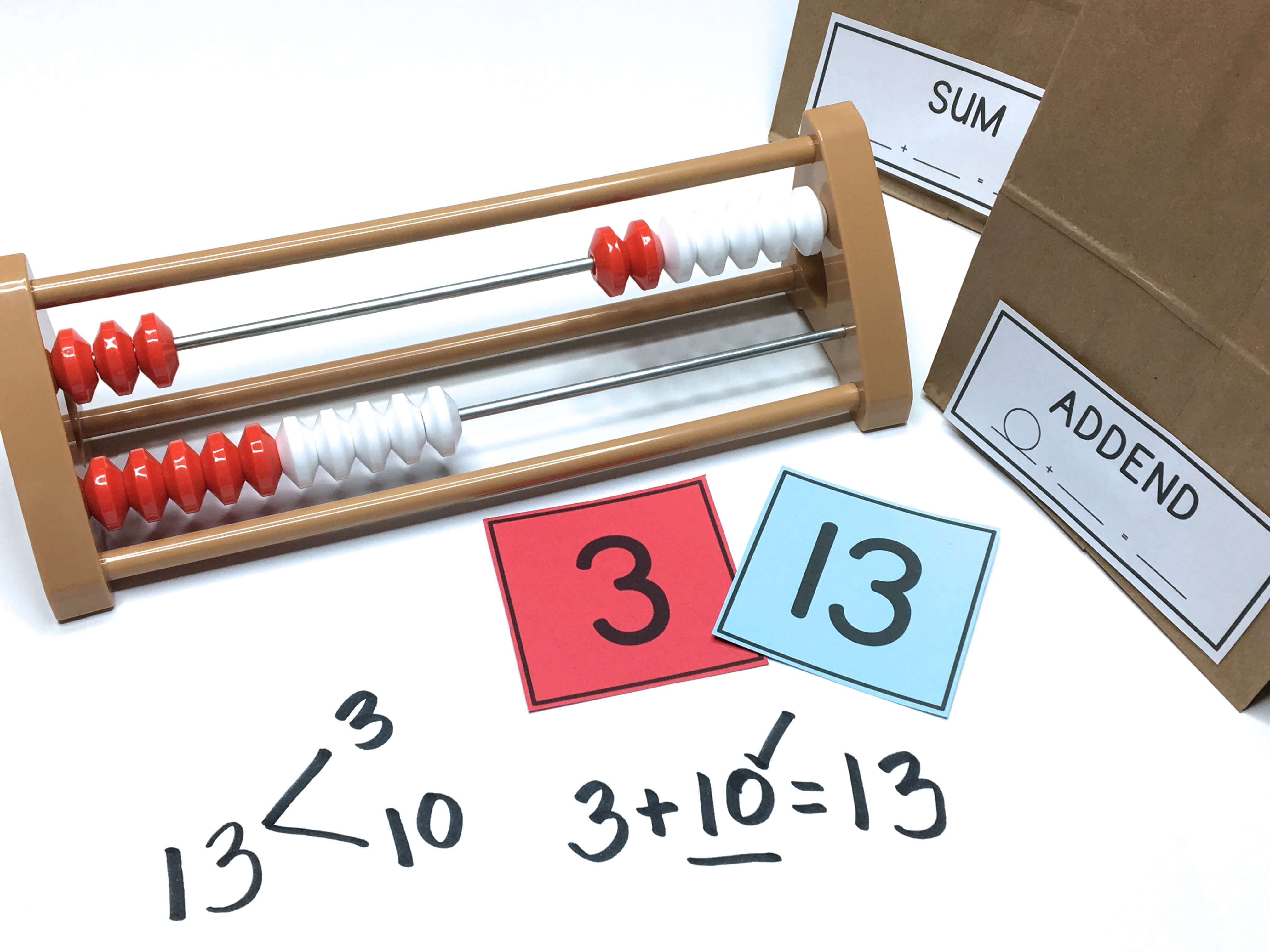
Students will see the same center 2-3 times a year (depending on the skill and if it’s needed). As a number-sense review, we often rebuild the 120s chart. I copy charts on colored card stock and then, cut them into pieces. I color-coded the puzzles ROY-G-BIV with red being the most difficult and purple being the simplest (the more pieces/the more intricate the cut the more difficult). My kids are so ‘gamey’ that they love the idea of leveling up!
We also love using our set of foam dominoes
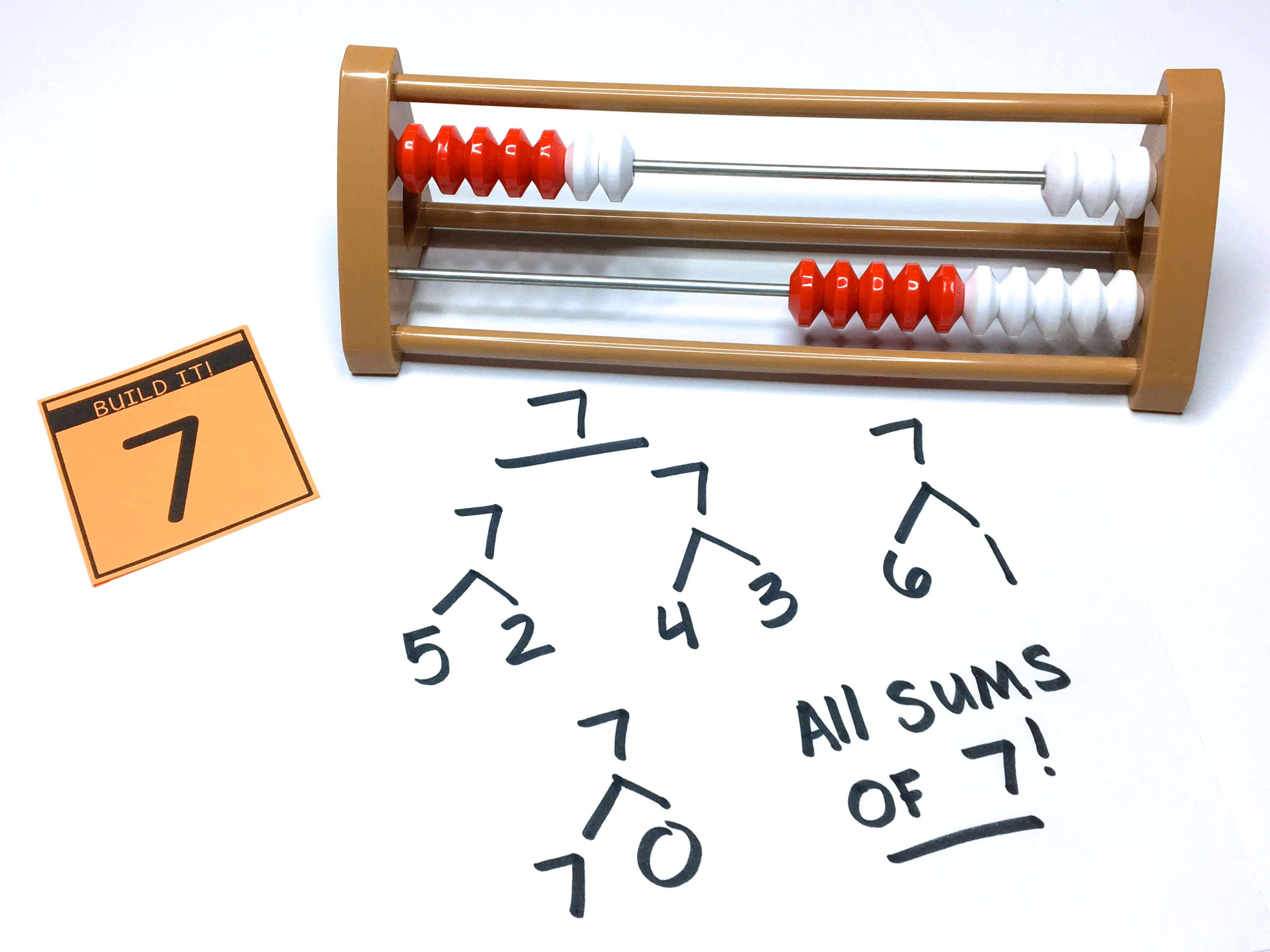
Guided Math Question- How Do You Enrich/Extend for Gifted Students?
Making sure every friend in my class has access to materials that push and challenge them is so important to me. Using the three-colored differentiation system, I intentionally plan and choose activities that work for all of my learners. Later in the year though, I do like to step outside of my math centers pack and introduce other enrichment options – math journaling and math puzzlers – for my high-flyers. These are the friends that are working a grade-level (or two) above 1st grade and the ones who sometimes struggle to show growth on District Assessment programs (STAR, MAP, etc.).
As teachers, our initial reaction is to say – “Hey, these friends know the first grade content. I’m time to move on.” – only to repeatedly hear from math coaches and administrators – “Don’t teach another grade level’s math content!” So, the question for the ages – if I can’t teach 2nd or 3rd grade content, how do I challenge these students and move them forward?
Math journals build flexibility in our math thinking and really challenge my high=flyers to think-through their mathematical processes. Additionally, many of our math journal prompts require students to consider how someone else solved the problem and to explain/defend/critique their process.
I’ll will also pull-out Math Puzzlers. These puzzlers require students to apply their math skills in flexible and unconventional ways. Additionally, all three avenues require students to ask themselves “Does my answer make sense?” as well as, be able to justify their answers.
So, tell me friends, how do you organize your math block? Do you use a Guided Math model with the meat of the mini-lesson happening in small groups or do you do more with whole group? What works in your classroom? Until then, you can sign-up here for Guided Math ideas and freebies to land in your inbox every month.
For more information and pictures about guided math and differentiation in my classroom, check out these posts!
Differentiating Math Centers with Dice
WATCH Math Centers in Math Classroom (FREE VIDEO)
Must-Have Materials for Guided Math
Building Conceptual Understanding with Rekenreks










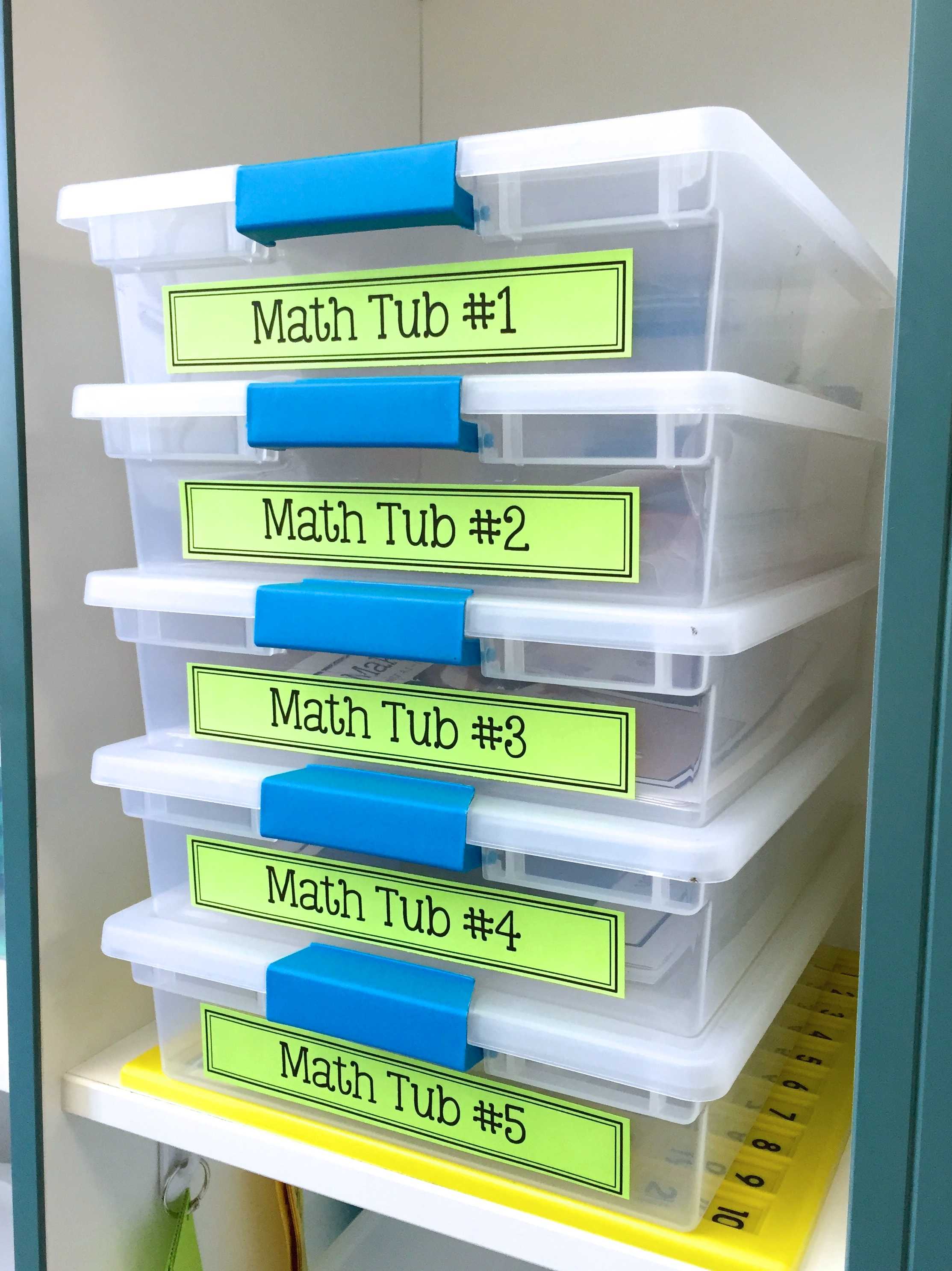




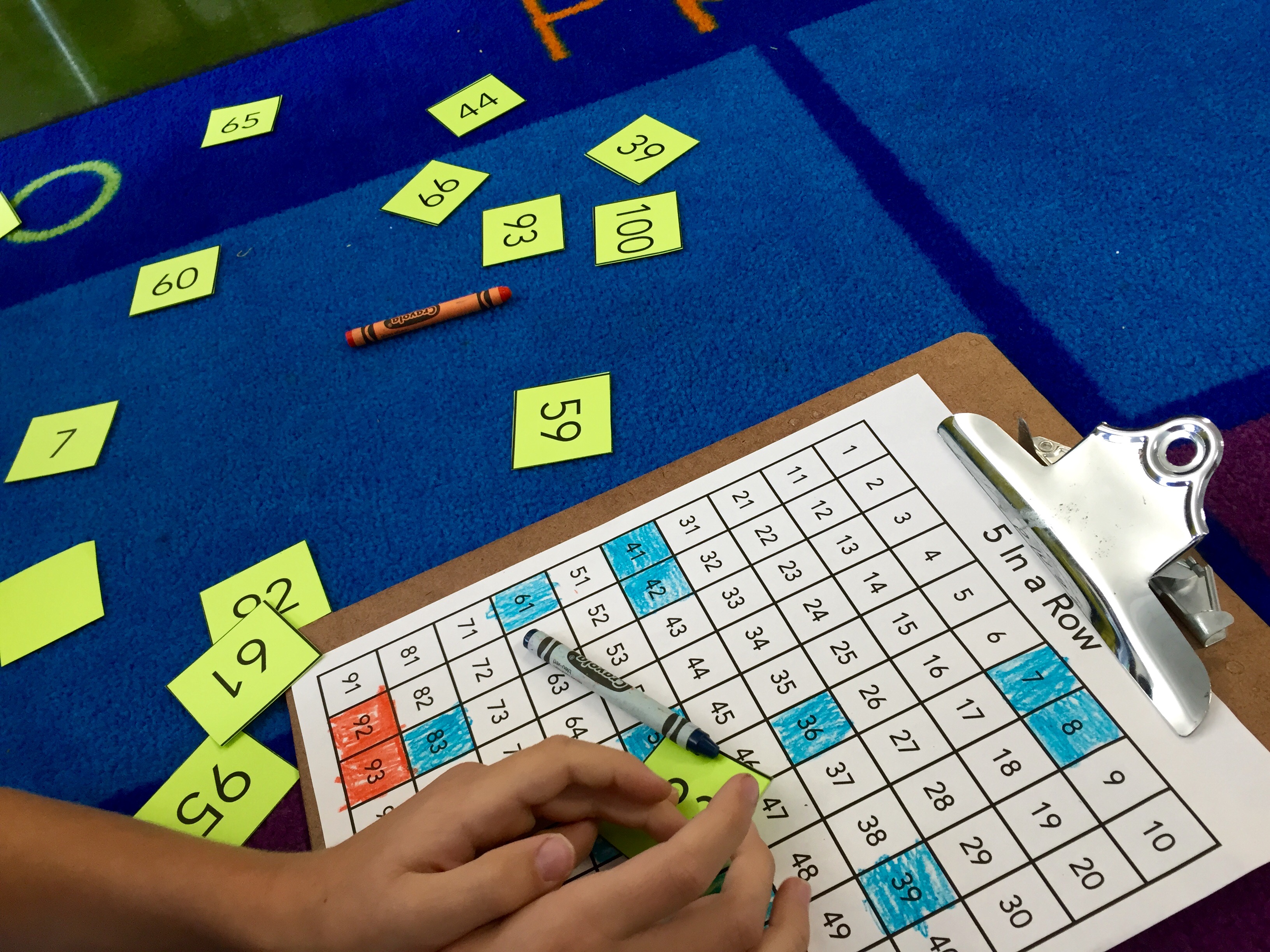


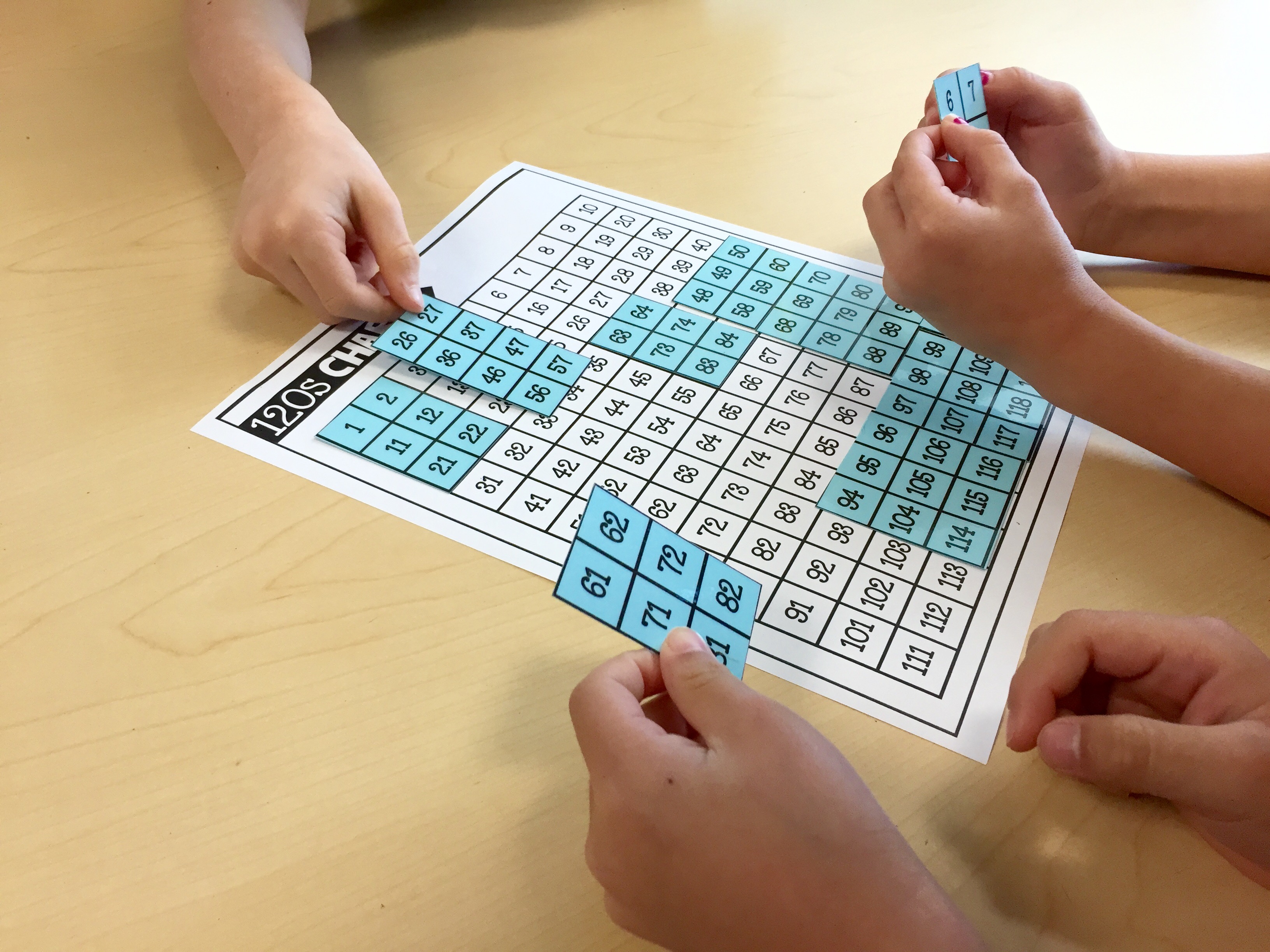


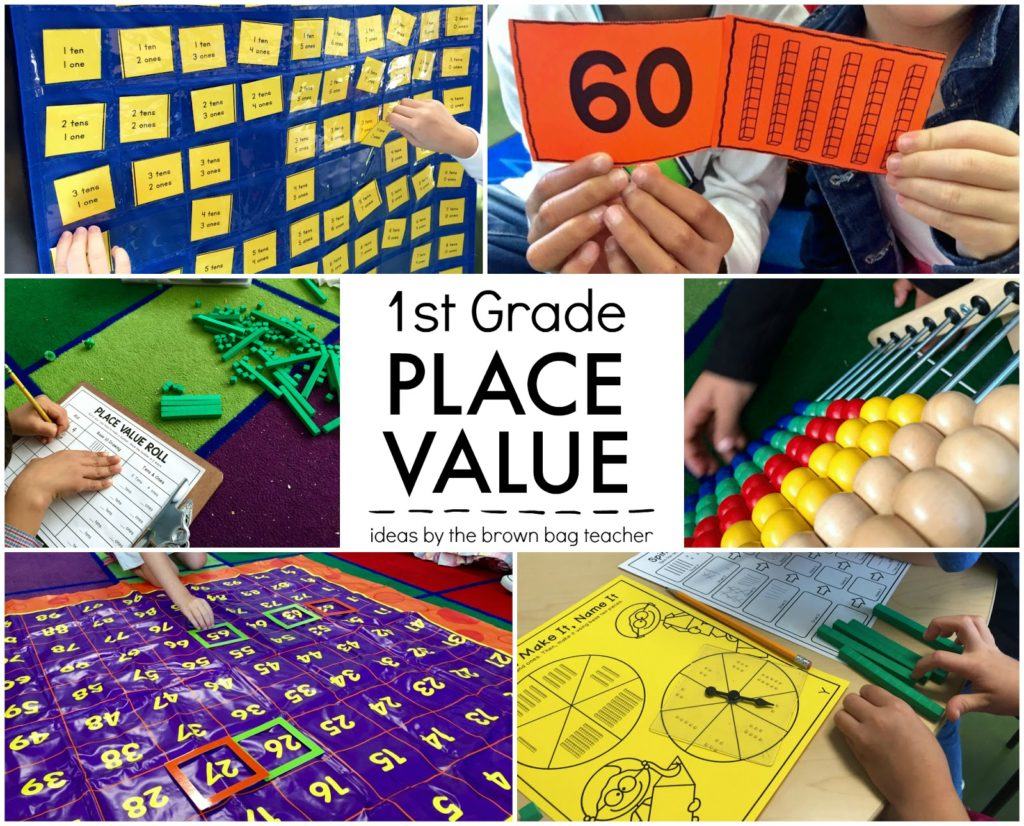


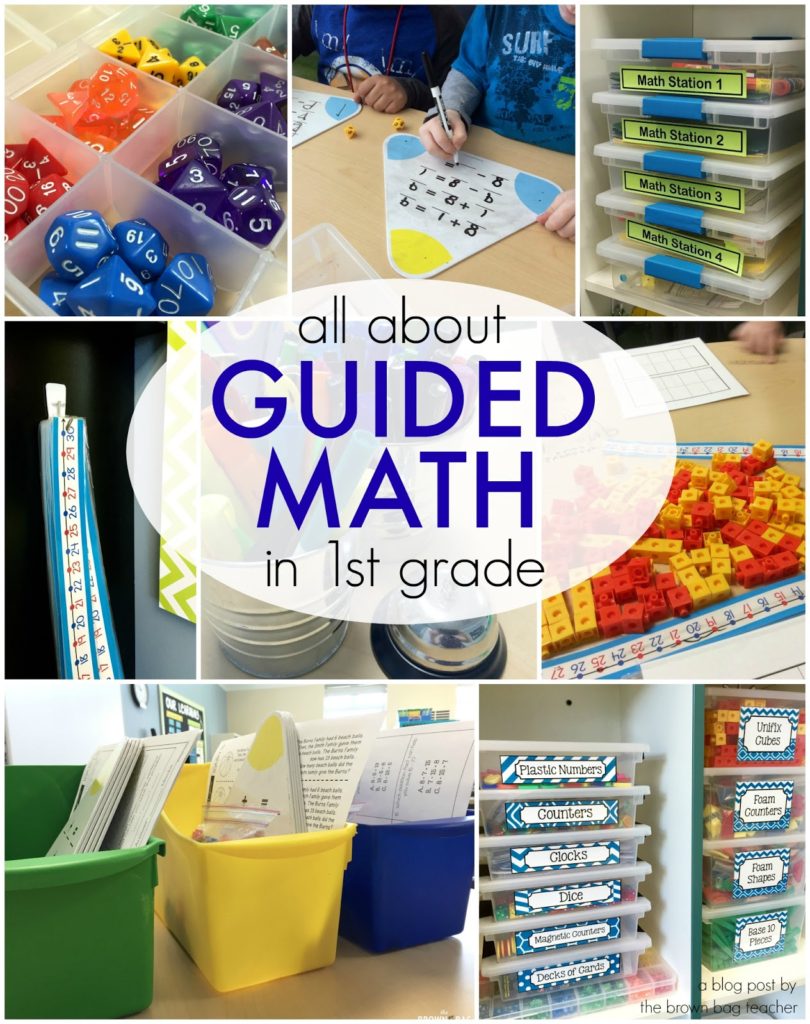
I knew you would have lots of ideas for this chapter! I felt like chapter 8 needs to be a book of its own. I love all of your organization, and you have given me more ideas about organizing and implementation. Last year I had a 2/3 combo and new curriculum, so I felt like I really rushed during my math block. Luckily, I had a really bright class, so I was able to teach one grade their concept, then they worked independently on a practice book page, then had a choice of a center, task cards, or other activity while I taught the other grade their lesson. I'm looking forward to having only one grade this year and diving deep into guided math.
I definitely agree; I would love a book just about the Daily 3. So excited for your new journey this year. 🙂
Excellent post! I've been debating switching my math instruction around as well and this really motivates me. Thanks for sharing!
Awesome as usual! In your photo of your desk I noticed there is writing on what looks the table itself. Or is there something there that can be written on? Love all your ideas. I have a lot of work to do to get ready but it will be worth it!
Hi Kelli! We're a new school (we've only been open 3 years) and our desks are perfect for writing on with dry-erase markers. The kids use wash rags to wipe it off and at the end of the day our custodians clean the tables. It's fabulous and really helps cut down on the number of 'things' on our teacher table! 🙂
See! I never would have thought of that! Brilliant! Thanks!
Kelli
This is the most incredible post with so many tips and tricks! I have to find a way to combine all small group math materials near my small group area so that they're quickly accessible. More than anything I struggle to plan for every group every week. Hoping to have a better handle on this next year! : ) Any tips?
Hope
With DI remember, you don't have to have 3 completely different lesson plans for each group (reading is a definitely a bit more planning). For math, all 3 of my groups are working toward the same I Can (for the most part) but getting there in different ways. We always work CRA (concrete, representational, abstract). My green groups spends a bulk of their time in concrete and my blue group spends a lot of time in abstract. To differentiate the activities, I might give green base ten pieces, yellow a 100s chart, and blue an open number line. Also, the writing component to math is often forgotten but a great way to differentiate, too!
Thank you for linking where you get your bins from. I have been trying to find the right ones for a long time!
I love how you have everything organized! Its so cute! I need to get some of those bins. I will have a first grader in about a week and a half! Math is his favorite subject and we count foam blocks, but you have some much better ideas here! I found your post in my BlogLovin feed. I'd love if you stopped by to visit me over at mommyonlyhas2hands.org. Hope you are having a great weekend!
I love your blog and all the information you share! I especially have been browsing your Math posts! Our school has been using "Investigations" for ages, and it is not aligning to well with Common Core or meeting standards. We were told that we could use it as a resource, so I am looking to re-vamp my Math curriculum. Your posts are so helpful, and I appreciate all the details and pictures you give. I have been collecting your resources on TPT. I was wondering if you would be willing to list out the progression of your Math curriculum-what you start with and what standards or units of study you progress with through the year! Thanks for your blog! I love it!
Your Organization is giving me life! I love it, I'm inspired. Really would love to set this up for myself.
Thank you for the great rotation models in reading and math! I'm looki g forward to trying them this year 🙂 Do they come in another type of file, for some reason Dropbox will not let me download them. Thanks so much!
Hello! Make sure to recheck the link. I just tried it out and it seemed to work fine. Sometimes DropBox can be touchy, so hopefully it's working again! 🙂
I just came across this post via Math Coach's Corner on Facebook and I'm intrigued. I currently use Investigations which I LOVE. It seems as though my district will be moving in a different direction soon and they are now asking that we implement "data driven" instruction time. The Daily 3 seems as though it might be the way to go. I have not yet purchased the book (I'm trying to get my school to purchase it). However, my big question is, when/how do you look over and grade all the center work? This has always been my biggest frustration with centers in reading and/or math.
Hi Miss Thompson! Any centers that include a recording log, my students staple to their Math Log sheet. At the end of each math block, I do a quick 5-minute check while students are filling out the plus/delta sheet. I check math journals by table while students are doing their morning work (I do a table a day so by the end of the week they are checked). At the end of each guided math group, I do a quick 3-4 question exit slip and check it on the spot!
How do you plan for what you will work on in the small groups with students? This is an area I struggle with the most. In a perfect world I would have time to plan my whole group mini lesson and my 3 small group, differentiated lessons but the reality is I just don't. I end up feeling like I'm scrambling when the kids come to the table with me and it's not an effective use of our time. I really want to change this but don't know where to get the time or resources to do it.
HI Julie! I use a quick three column chart with a main content standards for all 3 groups (it's typically the same standard just approached in a different way) and then, a quick list of activities/manipulatives for each group.
I love this! I have been feeling like I can't make mah workshop function in my class! I have bins (thanks to your advice) but how do the students rotate through all 5 bins? They do that during the pair activities? I don't know how that fits in. Please help! I love what you've done and would give anything to see it work in my classroom!
thanks for your ideas and laying out how you do things…
Great post where did you get the containers/bins from ? What size are they?
Hello! You talk about a 3 column chart to plan small group instruction–do you have a copy of this we could see ?
Interactive online math homework help ,Best site for math homework help solutions
I read this post and its tell me how to complete my school work one by one with easy way and how to complete my math working with new trick thanks for share it help me write my essay .
How many copies do you have in each math bin per group?
I love that youve shared your guided math organization with everyone. Ive been doing Daily 5 and guided math as well. I have one wuestion…I've tried to get my district to purchase Dreambox and think its an excellent program. Do you have any district data to support its use? I'm looking for math scores before and after program use. Could you pass along/ share some info? Thanks.
You mentioned having a three column organizer that helps you know what you need for each week's guided math groups. By chance, do you have this available on your blog or TPT store? I struggle in this area and would love to see how you do it week to week.
HI Lauren!! I'm hoping to put together a post this summer and share it template. Thanks so much for asking. 🙂
Hi! I stumbled on your blog while looking for ideas with the Daily Five, and now can't stop reading all of your posts. You have such a clear way of explaining things, and I love the photos you include with everything. It is clear your students benefit from a lot of dedication and planning on your part.
I'm looking to buy everything I'll need to give my entire classroom a complete facelift in the fall. It will be the first time I'll be teaching primary, and I'd like to invest in the bins and things I'll need so that everything *looks* nice as well as is nicely organized. I've had a mishmash of stuff since I've started teaching, and while it works ok, I'm really starting to believe that streamlining my space and making it visually appealing and organized for both myself and my students will make the space more calm and inviting and conducive to learning.
Would you be able to post the number of items of each thing you recommend as a beginning of the year start up? For example, I notice you use the sterilite bins for math centres and daily 5 – would 8 bins be enough to start out with? Or would I need 10? I have shared tables in my classroom, so kids will need a place to store their books (I'm thinking of the book bins you suggested), as well as shared supplies.
Anyway, I know it's a crazy time of year, but this might be a good idea for a blog post for the beginning of next year: supplies you will need to set your classroom up for success. Thanks a bunch for sharing your work!
HI,
I teach 22 second graders. We use Go Math! for our math instruction. I love your ideas, but I have a few questions. Do you teach a new lesson everyday and what do you do with your above level students during small group time with you? I’m trying to conceptualize how I can structure my math class.
Thank you,
Misty
Hey Misty! Great questions. This blog post should help a lot – http://brownbagteacher.com/planning-math-instruction/
Your video is nothing but excellence! I am a first-grade teacher taking math mindset courses for an advanced credential, and your modeling, descriptions, and rationale pull the whole visual learning segment to life.
You have also breathed new life into my excitement for math. Last year we implemented a new math curriculum …although I’m far from impressed by its content and progression, after watching your demonstration, I now feel rejuvenated and full of new ideas. I will be purchasing your year-long math talk package, as I am confident it is exactly what I need to help bridge the thinking gap (that the curriculum fails to incorporate).
Truly, I can’t thank you enough!
Hi, Catherine! I teach 2nd grade & want to restructure my math to guided math this fall. What are the quick fluency / skill games you use at beginning of your teacher table time w your groups? I’ve purchased your TPT:. Making 10 to Subtract and Math Centers 1st Grade. Do you use the math centers for fluency/skill game practice? Or do students do these centers with a partner during a math dummy 3 rotation? Thank you for your time & excellent blog posts:)
Is it possible to hire someone to help me write my research paper? Yes, you can get professional help from academic writers to complete your tasks.
https://brownbagteacher.com
EXPERT IN RECOVERY
I’m short of words for the amazing profit you helped me earn in just a week with binary options strategy am so sorry I doubted at the beginning, I invested $2000 and earn $13,500 in just one week, and kept on investing more, today I am financially successful, you can contact him.
Instagram : hacker judas
via Email: [email protected]
Math in 1st grade is a fantastic foundation for lifelong learning. It’s awe-inspiring to see young minds grasp the basics of addition and subtraction, setting the stage for more complex concepts ahead. And as for anatomy images, they’re like windows into the incredible human body. These visuals can spark curiosity, helping kids appreciate the marvel of our inner workings. Both math and anatomy images offer wonderful opportunities for exploration and discovery, nurturing a love for both numbers and science from an early age.
I really hope you keep giving the community great material wordle unlimited
The students are working with Fact Family Triangles (from Amazon) and differentiated dice based on their math group.
Such a very useful article. Very interesting to read this article.I would like to thank you for the efforts you had made for writing this awesome article
punk rock clothing
I just wanted to say how much I appreciate all you’ve done to help me keep a positive outlook and advance in my career.
play papa’s freezeria game
When I first invested with these crypto-currency traders on the Internet, All I could think about at that time was getting my profits and giving my daughters a happy life till they kept asking for more money and the fees were endless while trying to withdraw my investment. That’s when I realized that I have been conned. I was recommended to an asset hacker with expertise in the “Recovery of Bitcoin” . I hired them; their fees were appealing, and their results were more than what I expected. I successfully recovered my lost BTC and ETH from these scammers with the help of asset hacker. I highly recommend this Ethical hacker to anyone with ANY Cyber related fraud issue, Phone Hack, or seeking a Private Investigator via Email, [email protected] or whatsapp [+393510777769]
In the ever-evolving world of cryptocurrencies, the loss or theft of digital assets can be devastating. The anonymous nature of transactions and the complexity of blockchain technology make it challenging to regain lost funds. However, I discovered a life-saving solution when Asset Hacker came to my rescue. This article aims to provide an in-depth account of how Asset Hacker successfully recovered my lost bitcoin, showcasing the invaluable expertise and professionalism exhibited by this renowned firm. Asset Hacker has state-of-the-art equipment and a staff of knowledgeable professionals who are familiar with blockchain technology. Their in-depth understanding of digital forensics and bitcoin transactions gave me the assurance that I was working with the proper group to get my money back. Thank you Asset hacker recovery as they can be contacted via Email: [email protected] or whtsapp +393510777769